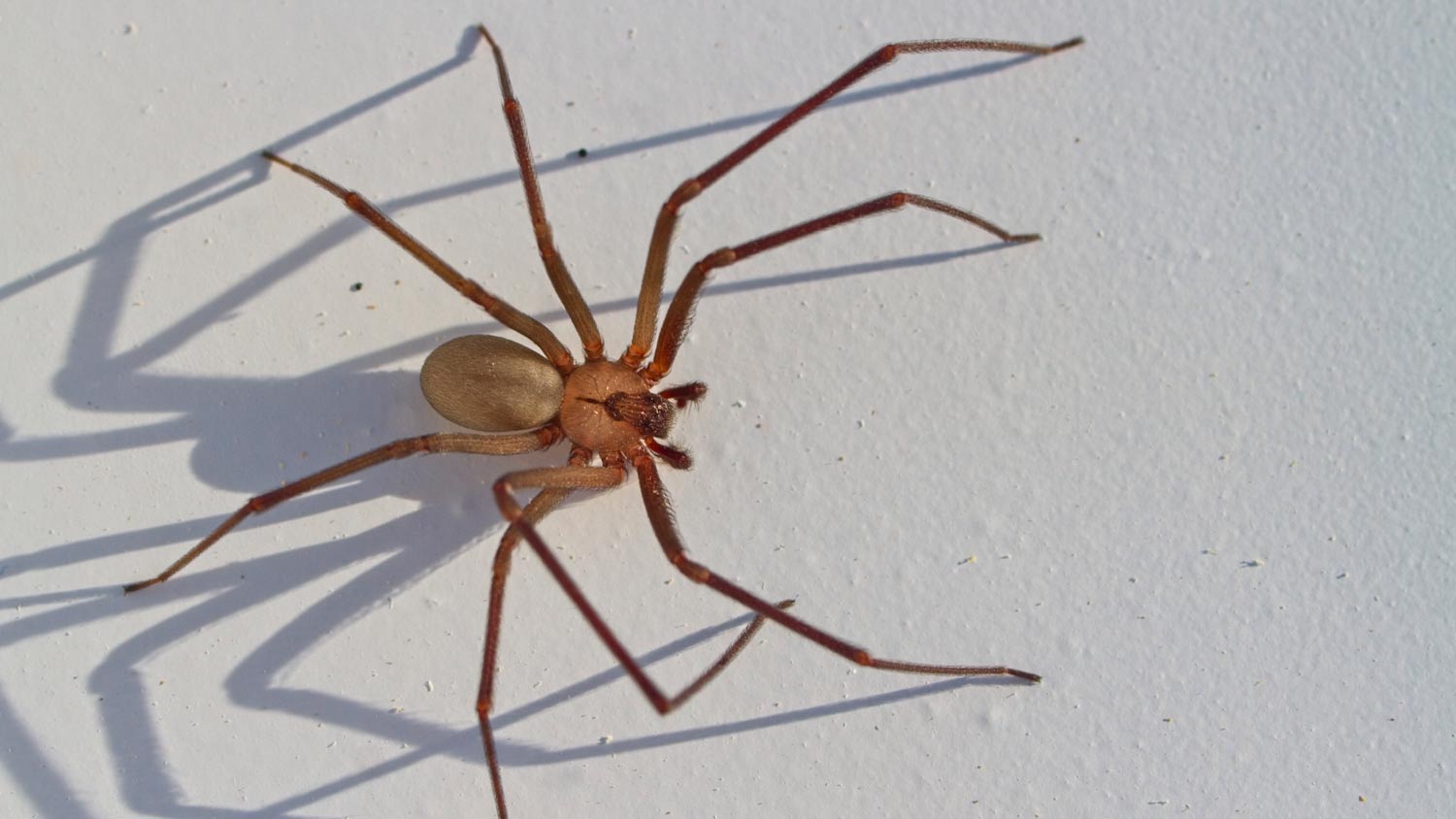How to Identify a Brown Recluse Spider
And keep them out of your home


Highlights
Brown recluses are one of two venomous spiders in the U.S.
They’re present in 16 U.S. states in the Southeast and Midwest.
You can identify them by their six eyes and fiddle-shaped mark.
Bites can have mild to severe effects.
They prefer dark and secluded areas.
Few critters are as widely considered as creepy as spiders. Even though most arachnid species are harmless—or even helpful because they catch many household insects—a brown recluse spider is not one you want around. In this guide, we’ll discuss what a brown recluse spider is, how to identify them, how to get rid of them, and when to call your local pest control.
What Is a Brown Recluse Spider?
The brown recluse is a venomous spider found in 16 U.S. states, primarily in the Southeast and Midwest. They range in size from around 1/4 to 3/4 of an inch, including their legs, which is less than the diameter of a quarter. Yet, they have big reputations because their bites can lead to pain, fever, nausea, and the notorious side effect of skin death, also known as necrosis.
Luckily, brown recluse bites are rare, and serious complications are even more uncommon. Fewer than 10 percent of brown recluse bites lead to necrosis. It’s also worth noting that fewer than three U.S. deaths per year are caused by spider bites by all species in general.
How to Identify a Brown Recluse

There are a couple of key ways to distinguish brown recluses from other spiders, but knowing all the characteristics will ensure that you identify them correctly.
Number of Eyes
The best way to identify a brown recluse is to count the number of eyes it has, as long as you can stomach getting close enough. Brown recluses have six eyes arranged in three sets of two, known as dyads, instead of the standard eight. While there are other spider species with six eyes, the vast majority have eight, making this a stand-out feature for recluse spiders.
Fiddle-Shaped Mark
Brown recluses are sometimes called “fiddlers” or “fiddleback spiders” because they have dark, fiddle-shaped marks on their cephalothoraxes, essentially their head. The mark is also described as violin-shaped. Several other species possess similar physical features, so the fiddle mark alone does not determine if a spider is a brown recluse, but it points you in the right direction.
Bite Mark
Bites from a brown recluse begin like that of many other spiders: reddened skin around two small puncture marks. Within 48 hours, however, the center of the mark will turn a blue or black color and possibly blister. The affected area can also dry out and sink into the surrounding skin because fluid isn’t flowing. Mild bites typically heal within three weeks, while more severe bites can continue breaking down skin tissue.
A few minor identifying features include:
Light brown legs that have no stripes and are covered in fine hairs
An abdomen that’s a uniform shade of brown
The webs are primarily in dark, secluded places, not in the open

Four Ways to Get Rid of Brown Recluses
1. Clean the House
While it’s unlikely to eradicate recluse spiders, cleaning the house is a logical first step in tackling the issue. After all, dirty spaces, exposed food, and clutter are among what attract spiders. Brown recluses are particularly common in attics and basements, so it’s worth cleaning up those rooms too.
2. Use Repellent
You have two options here: First, you can purchase an insecticide online or at a grocery or hardware store. They usually come in aerosol cans and are effective against many pests, including brown recluses. Second, you can make a natural spider repellent on your own. A solution of equal parts water and vinegar will kill various spiders. Make sure to spray in dark corners and along crevices. After you’ve eliminated the infestation, we recommend using essential oils like lavender or tea tree oil to stop brown recluses from returning.
3. Set Traps
Spider traps are another effective way to get rid of recluse spiders. The adhesive-based traps are affordable, easy to find in stores, and often pesticide-free. Simply place them in problem areas, and they will lure brown recluses along with other spiders.
4. Call Pest Control
Whether you’ve tried some of the methods above to little avail or simply want the infestation eliminated as fast as possible, calling pest control or an exterminator is the most effective way to get rid of brown recluse spiders. The average spider exterminator cost ranges from $100 to $300, but keeping your home safe from these venomous pests could be well worth it.
Frequently Asked Questions
If you are experiencing severe symptoms—e.g., pain, nausea, vomiting, or skin rash—seek medical care. Fortunately, most brown recluse spider bites result in mild side effects. To treat, wash the bite site with soap and water, then apply a cold compress to reduce swelling. Over-the-counter pain medication can be taken, as well as antihistamines if the area itches. Antibiotics can also be used to heal the wound and treat infections.
Brown recluse spiders are most active at night. As the name “recluse” suggests, they prefer the dark, which is when they hunt small insects and other spiders. Regarding the time of year, brown recluses are more likely to be seen during warmer months, typically between March and October.

 - Derek Rose.png?impolicy=thumbnail)